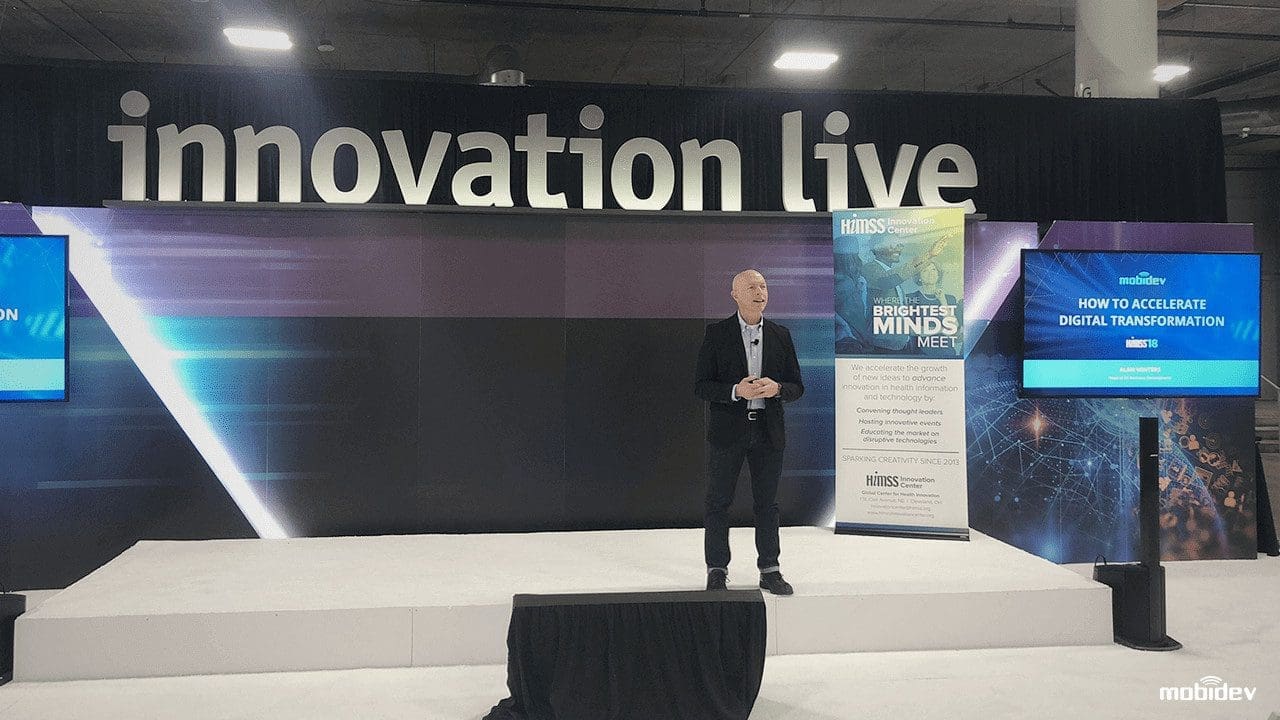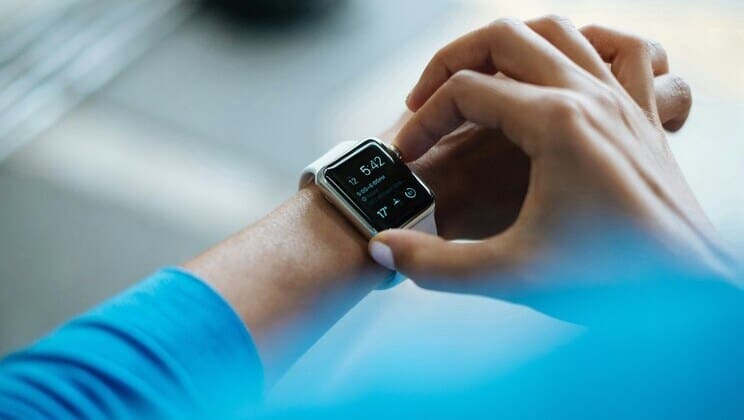A few days have passed after our participation in HIMSS 2018, a conference for tech innovation in the healthcare industry that took place earlier this month in Las Vegas. Representatives of major US and Canadian healthcare businesses, hospitals, and medical universities were attending the event—and we had the chance to talk to them and form a picture of modern healthcare business in North America from the perspective of tech innovation. Here is our pick of 5 main trends.
Trend #1 • Data is at the forefront
The much-hyped Data Science was just a part of the trend that was omnipresent at the event. Its name was data. Healthcare businesses expressed an active interest in integrated solutions that gather, process, interconnect, store, and analyze data for any particular purposes. For example, it could be work with confidential patient information or prediction of viral diseases for the timely creation of medicines for prevention and treatment.
It is worth noting that the healthcare system aims for decentralization. This, in turn, will help with the continuous optimization of interconnected data and service. However, effectively working results are yet to appear on the healthcare market, and it is uncertain whether blockchain is capable of becoming the game-changer.

Trend #2 • Healthcare businesses prefer dated yet proven systems
In other words, if it ain’t broke, don’t fix it. This opinion is shared by a considerable number of established healthcare businesses. Quite naturally, they are reluctant to experiments. Innovations are introduced very carefully, with care for security and reliability of tech ecosystems. However, over time this approach brings the problem of huge legacy bases.
When it comes to software products for healthcare, each niche is usually dominated by just one product, which is used for years. This means no real choice and no real competition. The absence of struggle on the market allows these dominating products to become dated and inconvenient, with no improvements whatsoever. They are supported properly enough to remain stable and reliable, and that’s it.
Creating a worthwhile competition would stimulate more active development of these products. Yet it would take much effort and investments, as well as the talent that would be able to implement and deploy it—which is a matter of at least a couple of years.
Trend #3 • New compliance standards of software products in terms of data security
The aforementioned problem is quite telling when it comes to data security concerns. Legal protection of data security imposes certain restriction on new products. In addition to the existing healthcare-specific HIPAA, data protection will be strengthened and unified by the EU-issued GDPR, due to be implemented on May 25. It will be directly binding and applicable for all EU member states without any additional enabling legislation.
These compliance standards may require additional security-related enhancement of existing large systems, which doubtlessly become more vulnerable over time. However, smaller healthcare businesses are likely to remain perfectly happy with what they currently have.
Trend #4 • US healthcare will be shaped by big players
At HIMSS, we saw numerous B2B solutions offered by product companies to hospitals and medical centers. These solutions covered every possible sphere: from medical equipment to connected health solutions, from medical IoT devices to Augmented Reality solutions. This enhancement of existing systems will be relevant through 2018.
Meanwhile, it’s big players that might define this year’s healthcare industry landscape. A fine example is the triad of CEOs—Jeff Bezos, Jamie Dimon, and Warren Buffett—who famously announced they are intent on using innovation to engineer efficient and affordable healthcare delivery in the US. Even though the announcement is rather hazy at the moment, there is little doubt they are capable of doing it—and the sphere is very promising.

Trend #5 • Digital transformation remains a matter of ideas and research
In his opening keynote at the event, Google CEO Eric Schmidt called the modern US healthcare industry “conservative beyond where it should be.” Indeed, existing healthcare ecosystems have been operating 24/7 for years. Yet it does not mean they remain as safe and secure as they were when first introduced. What’s more, their customizability still nears zero.
That said, healthcare businesses are still waiting for new B2B products that will deliver value and reliability in a new way. From what we have seen at HIMSS 18, innovative healthcare technologies and products remain a matter of ideas and research—and MobiDev will be an active part of it. Stay updated for new insights!




